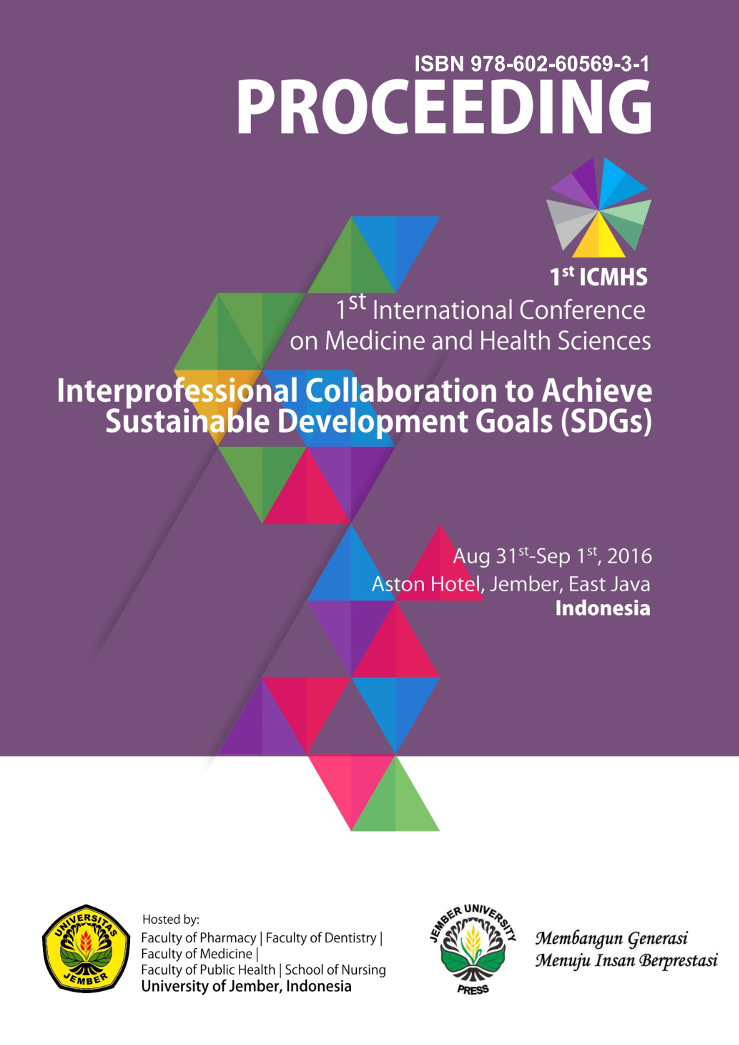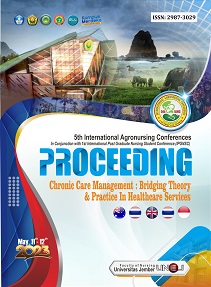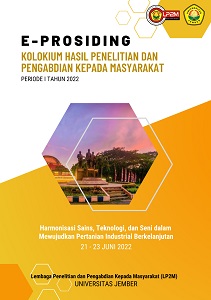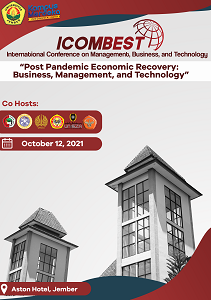INDEPENDENT FAMILY PLANNING IN RURAL AND URBAN AREAS GRESIK DISTRICT
Abstract
Based on the results of IDHS 2012 showed for thefirst time for 7 times IDHS since 1987, Indonesia TFR
(Total Fertility Rate) figures currently show a
downward trend, but settled (stagnant) in the figure
of 2.6 per woman until 2012. [1] The IDHS results
can be seen in Figure 1.
Figure 1. Tren TFR Indonesia, 1991 – 2012 (IDHS 2012)
Figure 1. shows that the TFR of 2.6, which means
that every woman until the end of her reproductive
life on average have 2.6 children. It has the potential
occurrence of higher birth rates in the coming
decades. Results Demographic and Health Survey
2012 showed that the TFR in East Java today has
increased rather than IDHS 2007 of from 2.1 to
2.3.[2] Considering this, the family planning program
needs serious attention, given the increase of
population in Indonesia requires the setting and
subsistence good and decent. The success in the
implementation of family planning programs is
influenced by several factors. Presence Extension FP
and the support of government / local governments
is crucial. Besides the role of the public to participate
directly in the program is also a key to the success of
the program. Participation of the community as
participants in the program experienced a
fluctuating conditions, when at this time are
required to be more independent in getting family
planning services. Funding for family planning
services should be paid by the communities
themselves. On the other hand, after the economic
crisis hit the country, resulting in the price of goods
has increased and lower purchasing power. This
gives a huge impact on society, especially in
spending money and setting priorities in the
household. This will lead to two possibilities were
done by the people, namely, the first is a higher
incidence of drop-out users of contraceptives and
the second is a change in use of contraceptives from
effective to ineffective. Moreover, the existence of
subsidies for contraceptives at this time is very
limited. FP independently be one option for people
who want use FP including for people in rural and
urban areas. Conditions rural and urban have
different characteristics. The rural tends to be
holding culture / customs, do not easily accept new
things, facilities and infrastructure is not as complete
as in urban area, education is still relatively low. [3]
Gresik district is one of district in East Java with the
achievements of TFR were categorized high at 2.20
in 2012. Even in 2013 based on data reports
acceptors in East Java Legislative BKKBN (2013) the
addition of new family planning acceptors is quite
low at 15 % compared to other districts.
Therefore, it is necessary to study the conditions of
rural and urban communities in Gresik in
Independent Family Planning (FP).
Published
2017-01-27
How to Cite
SULISTYORINI, Yuly et al.
INDEPENDENT FAMILY PLANNING IN RURAL AND URBAN AREAS GRESIK DISTRICT.
UNEJ e-Proceeding, [S.l.], p. 215-218, jan. 2017.
Available at: <https://jurnal.unej.ac.id/index.php/prosiding/article/view/3935>. Date accessed: 22 dec. 2024.
Section
General









